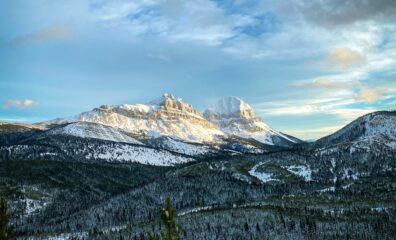Crowsnest Formation
July 3, 2018
From the resource-rich grounds beneath the well-traveled streets, to the coal buried deep within the mountains of the pass, the Crowsnest Formation – as it’s formally known – has been a catalyst for notable geological activity for more than 100 million years.
Originating as pyroclastic (a.k.a. volcanic) rocks, which were deposited in a series of explosive volcanic eruptions during Albian stage of the Early Cretaceous epoch. The Crowsnest Formation rock chemistry is normal, but its mineral composition is unique and includes melanite (a variety of andradite garnet) and analcime (a variety of zeolite).
The region’s geological characteristics have been an integral force in shaping its economic and social histories.
A University of Lethbridge geological survey suggested the tectonic plates in The Pass had shifted about 83 km in a single, one-million-year period.
After these volcanic rocks settled in place, they were eventually fully submerged in water during the Cenozoic era (roughly 70 million years ago) when Alberta was mostly underwater or part of a massive delta.
The pace of geological activity in the Crowsnest Formation has been relatively quick according to the geological time scale.
Today, visitors to the Crowsnest Pass can experience the region’s unique geological characteristics in many different ways:
The Bellevue Mine offers tours of the underground operation, allowing visitors to venture 300 m horizontally into the mine – which originally had more than 240 km of operational space dug out of the shadow of Turtle Mountain. Tours run from May to August.
The Frank Slide Interpretive Centre, which takes visitors on a journey through the country’s biggest mining disaster, is open year-round and offers many different and interactive ways to look back into the past and feel the impact of the Frank Slide.




